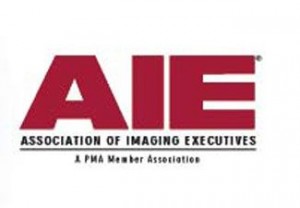The Future Imaging Summit conference I produce for PMA’s Association of Imaging Executives (AIE) is gearing up for its third year—and I’m going to change something substantial about it, because of this column.
What AIE Has Been
The AIE’s Future Imaging Summit is part of the conference track that PMA (the not-for-profit worldwide Photographic Marketing Association) provides in the days leading up to its trade show in Las Vegas during the 2015 International CES. The attendees cross the gamut from professional photographers and retail store owners to app developers and hardware makers.
Because PMA is a not a profit-generating company, the minimal expenses of the conferences are covered by corporate sponsorships, from companies big and small.
 This year, the summit’s primary sponsors are Mylio—a company offering a new, professional image management subscription service—and HP Indigo, the manufacturer of the leading hardware used by photo book makers. Among the other sponsors are European photo print leader CeWe and American photo print leader Color Centric, as well as Media Clip, DigiPic and MailPix.
This year, the summit’s primary sponsors are Mylio—a company offering a new, professional image management subscription service—and HP Indigo, the manufacturer of the leading hardware used by photo book makers. Among the other sponsors are European photo print leader CeWe and American photo print leader Color Centric, as well as Media Clip, DigiPic and MailPix.
There are four sessions, looking at the primary areas in the imaging industry: Cameras & Capture; Sharing and Social Imaging; Software & Apps; Printing & Output. The sessions are primarily presentation-free discussion panels, at which I ask experts and executives from the top companies what they think most impacts their business, what new technology will improve their products, and what they believe represents the biggest threats and opportunities for our members in the audience.
What Will Be Different
This column is all about the entire imaging ecosystem, and how all the parts must work together for everyone to optimally benefit. At the summit, however, I generally only asked the speakers to talk about their own areas of interest and commerce.
This year I’m going to ask the speakers at each session to also talk about the business areas featured in the other sessions: what can they do better for the other activities, what can those other businesses do to aid them? How can camera makers improve the business of the photo printer providers? What can social imaging sites do to help picture-enhancing software developers?
This potentially could be a very valuable avenue for discussion, one that might benefit both those in the audience and the speakers on the podium, as they debate possible new approaches for cross-disciplinary cooperation. (Although writing this now does point out that perhaps we also need a panel that mixes and matches speakers from the different industries—that’ll be 2016!)
As I wrote here previously about launching the Visionary Awards reception: the photography business overall depends on a wide range of companies that sometimes compete, but in many cases just ignore each other. At the AIE, we want to change that. There are few if any opportunities for print providers to talk with phone makers, even though most of the photos those printers hope to make money from are first captured on phones these days.
How could the two sides of the input/output equation help each other? Right now, we don’t know, really. How could a social web service work more closely with an image enhancement software developer? There isn’t one place, one umbrella organization at which these diverse companies can come together. We plan to build the AIE into that organization.
What Will Be the Same
Apart from the informative speakers, the best thing about the Future Imaging Summit is the format for the panel discussion.
When I first started attending conferences, longer ago than I’d like to admit, I was often bored outta my mind—and I wasn’t alone. Why? Because a “panel” often meant one mid-level marketing spokesperson after another standing in front of their standard PowerPoint, rattling off company info in a talk that was in no way even tailored for the particular occasion.
After four or five of these snooze fests, the moderator might ask a few spontaneous questions, or someone from the audience would try to wake themselves up by shouting something—and then the fun started, as the presenters actually engaged with each other!
So when my consulting company first thought of hosting our own conference, I proposed one simple rule: let’s always cut right to the good stuff. No presentations. No boring company histories. We’ll just jump right into fast-paced conversation, addressing the issues most important to the audience.
A decade later, that’s still how I run my shows. And every year, audience members tell me they really enjoy it.
Looking Forward to Seeing You
After reading all this, your no doubt wondering: Hey, can I attend and hear all this in person?
Of course you can! The Future Imaging Summit is in Las Vegas, on the two days before CES 2015. You can sign up here to enjoy it and other informative sessions, all offered by the industry’s primary association, PMA.
Also, come hear me present on these issues and more in my own session on Imaging’s Future, on Wednesday, January 7 at 2:15. I’ll talk about the latest innovations in all these areas, what photography still needs, what we have to look forward to in the near future, and how we can all benefit from it. Please join me there.
Future Imaging Summit 2015 speakers include: CeWe, Reiner Fageth; ColorCentric, John Lacagnina, Sr.; Fujifilm, Jim Riekert and Justin Stailey; HP Indigo, Bob Carmasino; Imaging Resource, Dave Etchells; iON, Giovanni Tomaselli; LifePics, Vahe Christianian; Mediaclip, Philippe Gascon; muvee, Terrence Swee; Mylio, Kevin Gilbert; Panasonic, Darin Pepple; Photo Finale, Steve Giordano, Jr.; Ricoh Imaging, Jim Malcolm; and Samsung, Jay Kelbley.





